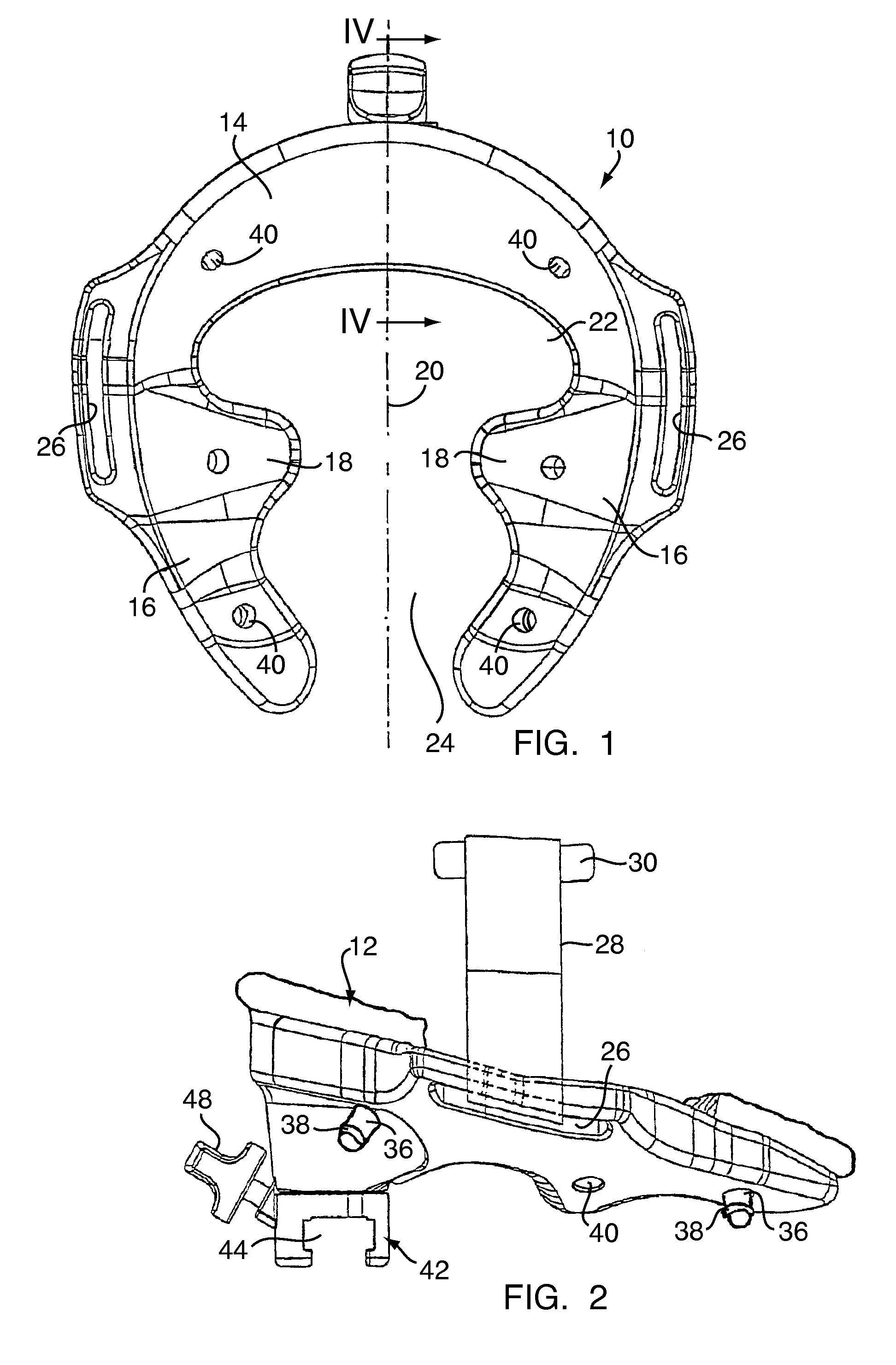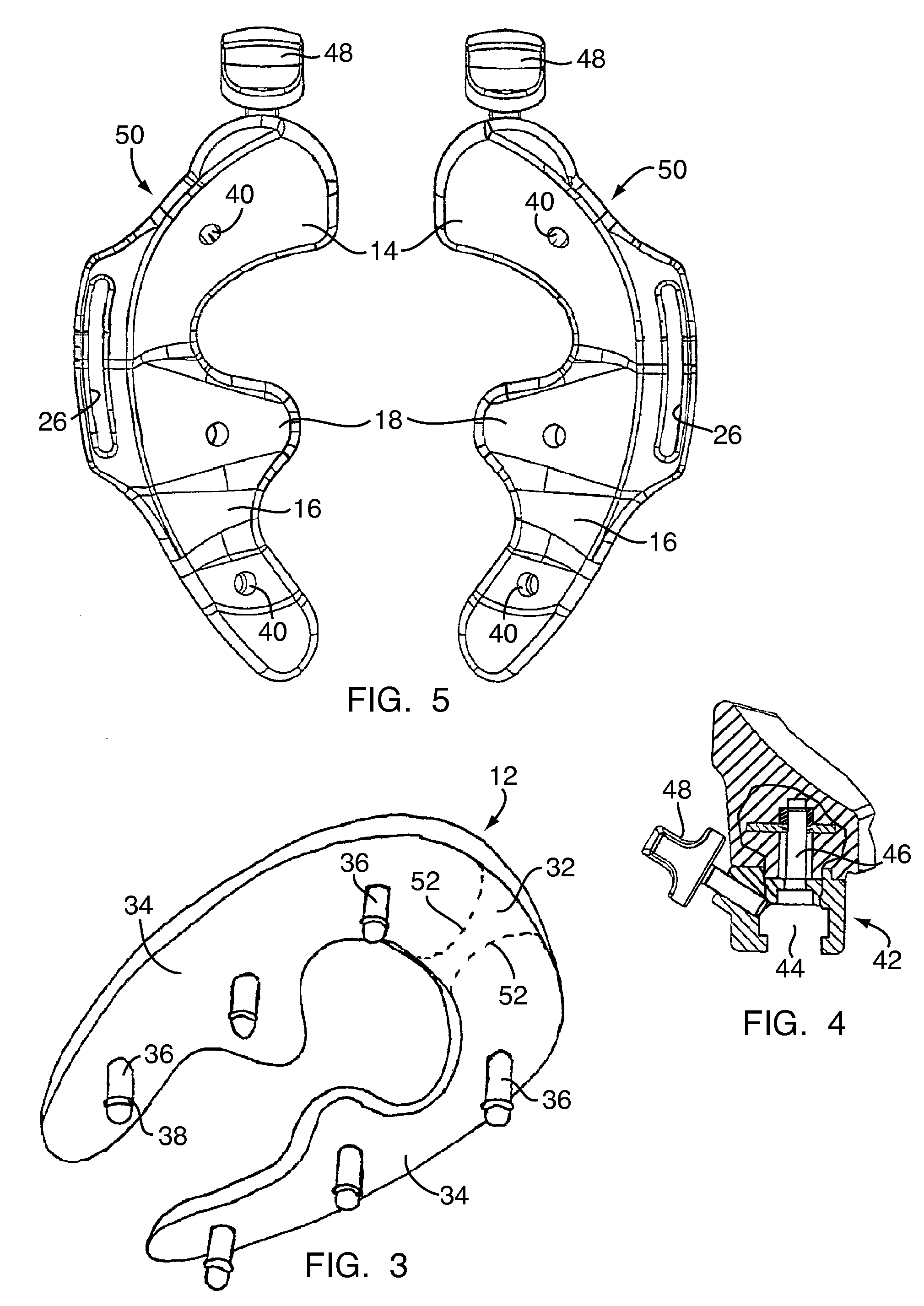Headrest for a patient-bearing surface
a technology for patient-bearing surfaces and headrests, which is applied in the field of headrests for patient-bearing surfaces, can solve the problems of unsuitable support and not well-adapted to human shap
- Summary
- Abstract
- Description
- Claims
- Application Information
AI Technical Summary
Benefits of technology
Problems solved by technology
Method used
Image
Examples
Embodiment Construction
[0023]The headrest illustrated in FIGS. 1-4 has an approximately horseshoe-shaped form and includes a rest shell, indicated generally at 10, and a support cushion 12 conforming in its shape to that of the shell. The rest shell has a central section 14 designed to support the rear head of a patient (lying on his or her back) or the forehead of a patient (lying on his or her stomach). This central section 14 on its upper or inner side facing the viewer in FIG. 1 is of at least nearly spherical shell shape. Connected to the central section 14 are two side sections 16 which approach one another with their free ends and each of which has a section 18 protruding toward the other side section 16, which sections 18 form a cheekbone support, that is a support which supports in the region of the cheekbones the face of a patient lying on his or her stomach. The side sections 16 conform approximately to a common cylindrical surface whose axis is parallel to the line of symmetry 20 of the headre...
PUM
 Login to View More
Login to View More Abstract
Description
Claims
Application Information
 Login to View More
Login to View More - R&D
- Intellectual Property
- Life Sciences
- Materials
- Tech Scout
- Unparalleled Data Quality
- Higher Quality Content
- 60% Fewer Hallucinations
Browse by: Latest US Patents, China's latest patents, Technical Efficacy Thesaurus, Application Domain, Technology Topic, Popular Technical Reports.
© 2025 PatSnap. All rights reserved.Legal|Privacy policy|Modern Slavery Act Transparency Statement|Sitemap|About US| Contact US: help@patsnap.com



